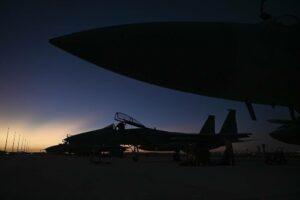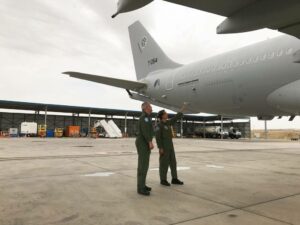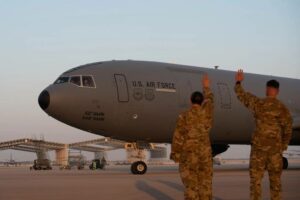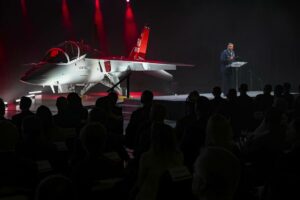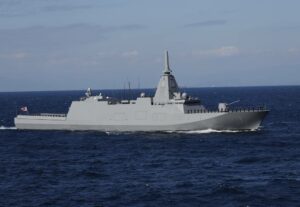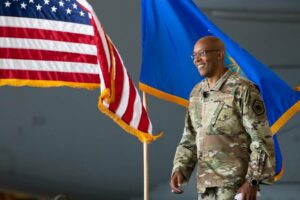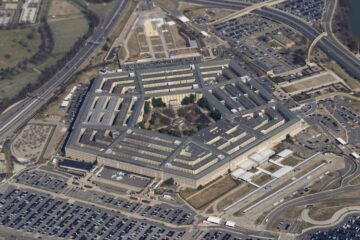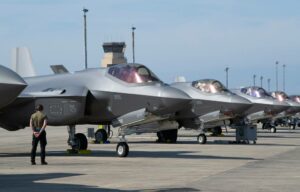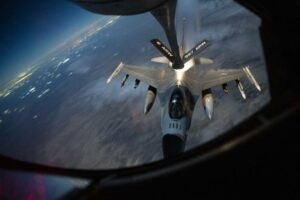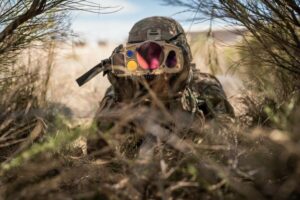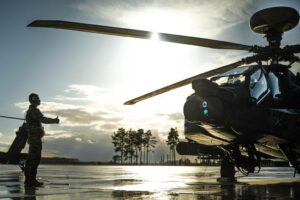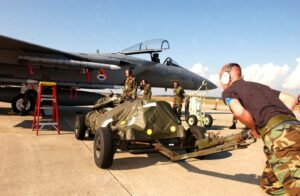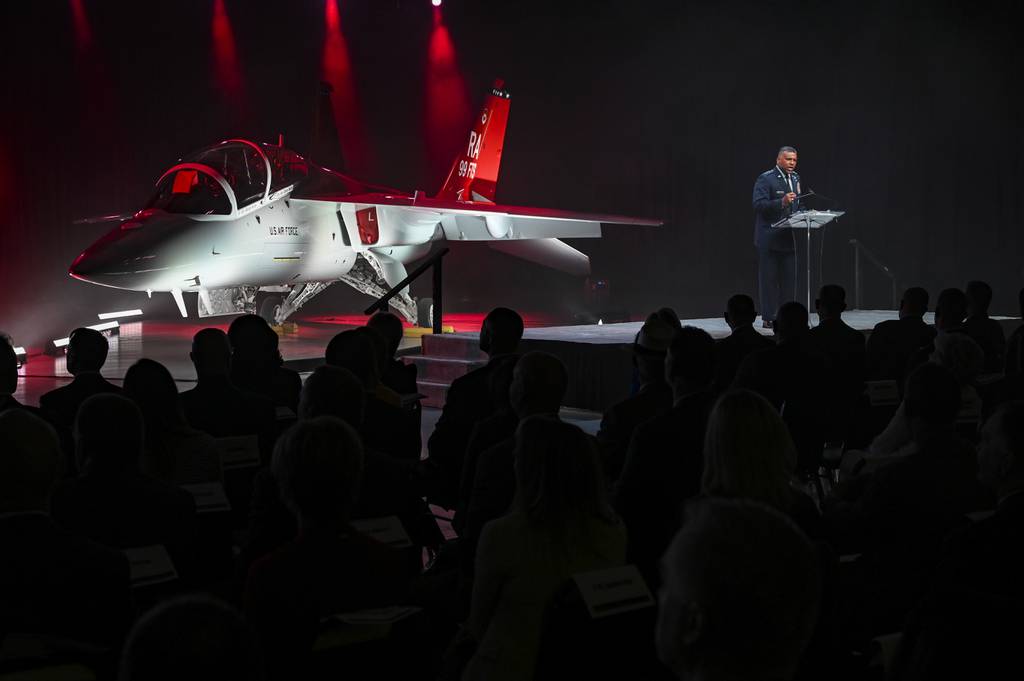
WASHINGTON — Boeing’s T-7A jet trainer aircraft is not expected to reach initial operational capability until spring 2027, three years later than originally planned, the Air Force said.
The Air Force’s next jet trainer has struggled with problems such as a potentially dangerous escape system and ejection seat. Earlier in April, the Air Force acknowledged those troubles, and the time needed to fix them, caused it to delay a milestone C production decision to February 2025. Boeing is now expected to deliver the T-7 in December 2025.
In a follow-up email, Air Force acquisition chief Andrew Hunter said the delay in the milestone C decision means the T-7 isn’t slated to reach initial operating capability until 2027.
Hunter said the Air Force and Boeing are continuing the T-7′s testing process, and completed an on-the-ground sled test in February. The aircraft is on track for its first taxi test in the next few weeks, he said. During taxi tests, an aircraft proceeds down a runway, in some cases at high speed, but does not take off. Such tests are usually carried out before flight tests.
“These tests posture the T-7 program to resolve issues with the escape system and move forward to deliver the training capability the Air Force requires,” Hunter said.
The service is looking for ways to speed processes to recover some of the lost time from the recent delays, Hunter said.
The new IOC date will be three years after the T-7′s original goal to achieve IOC in 2024, and a year behind the most recent revised date of 2026.
The Air Force plans to replace its fleet of 504 aging T-37 Talon trainers with 351 T-7 Red Hawks.
The T-7 was designed to better accommodate both male and female pilots, and pilots with a wider range of body types and heights.
But tests conducted in 2021 found that for some pilots, the plane’s escape system could be dangerous. Some ejecting pilots could be at a high risk of concussions, unsafe acceleration when parachutes open, or losing their visor at high speeds, the Air Force said in December 2022.
The Air Force said improvements to the escape system and testing will make it safe and effective.
The first two production-relevant T-7s are undergoing test flights at Boeing’s St. Louis, Missouri, facility, where the company is finishing construction of five engineering and manufacturing development Red Hawks. Boeing said those five planes will start flight tests this summer in St. Louis.
And the Air Force said the first three of those will then move to Edwards Air Force Base in California, where further flight testing will begin in September.
Stephen Losey is the air warfare reporter for Defense News. He previously covered leadership and personnel issues at Air Force Times, and the Pentagon, special operations and air warfare at Military.com. He has traveled to the Middle East to cover U.S. Air Force operations.
- SEO Powered Content & PR Distribution. Get Amplified Today.
- PlatoAiStream. Web3 Data Intelligence. Knowledge Amplified. Access Here.
- Minting the Future w Adryenn Ashley. Access Here.
- Source: https://www.defensenews.com/air/2023/04/28/key-milestone-for-new-boeing-trainer-aircraft-delayed-to-2027/
- :has
- :is
- :not
- :where
- 10
- 2021
- 2022
- 2024
- 2026
- 70
- a
- acceleration
- accommodate
- Achieve
- acquisition
- After
- AIR
- Air Force
- aircraft
- an
- and
- Andrew
- April
- ARE
- AS
- At
- base
- BE
- before
- begin
- behind
- Better
- body
- Boeing
- both
- but
- california
- cases
- caused
- chief
- COM
- company
- Completed
- conducted
- construction
- continuing
- could
- cover
- covered
- Dangerous
- Date
- December
- decision
- Defense
- delay
- Delayed
- delays
- deliver
- designed
- Development
- does
- down
- during
- Earlier
- East
- Effective
- Engineering
- escape
- expected
- Facility
- February
- female
- few
- First
- Fix
- FLEET
- flight
- Flights
- For
- Force
- Forward
- found
- from
- further
- goal
- he
- heights
- High
- HTTPS
- images
- improvements
- in
- initial
- issues
- IT
- ITS
- jpg
- Key
- later
- Leadership
- looking
- losing
- lost
- Louis
- make
- manufacturing
- means
- Middle
- Middle East
- milestone
- Military
- most
- move
- move forward
- needed
- New
- news
- next
- now
- of
- off
- on
- open
- operating
- operational
- Operations
- or
- original
- originally
- out
- pentagon
- Personnel
- Pilots
- Planes
- planned
- plans
- plato
- Plato Data Intelligence
- PlatoData
- potentially
- previously
- problems
- proceeds
- process
- processes
- Production
- Program
- range
- reach
- recent
- Recover
- Red
- replace
- reporter
- requires
- Risk
- runway
- s
- safe
- Said
- September
- service
- some
- special
- speed
- speeds
- spring
- start
- such
- summer
- system
- Take
- test
- Testing
- tests
- than
- that
- The
- their
- Them
- then
- this
- those
- three
- time
- times
- to
- track
- Training
- traveled
- two
- types
- u.s.
- U.S. Air Force
- usually
- was
- ways
- Weeks
- when
- wider
- will
- with
- year
- years
- zephyrnet

